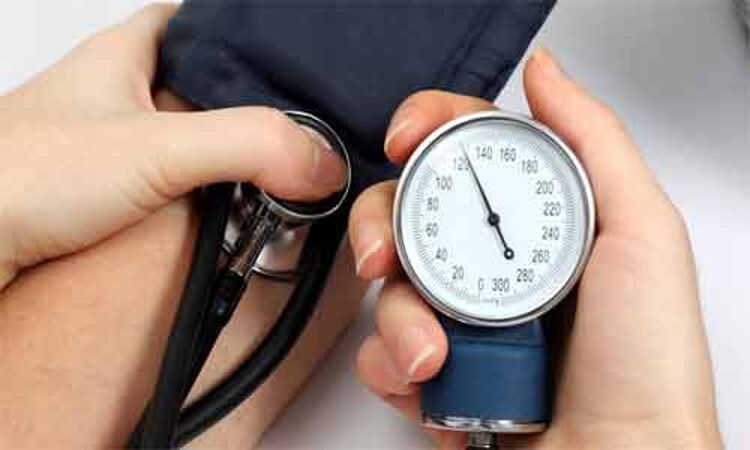- Home
- Medical news & Guidelines
- Anesthesiology
- Cardiology and CTVS
- Critical Care
- Dentistry
- Dermatology
- Diabetes and Endocrinology
- ENT
- Gastroenterology
- Medicine
- Nephrology
- Neurology
- Obstretics-Gynaecology
- Oncology
- Ophthalmology
- Orthopaedics
- Pediatrics-Neonatology
- Psychiatry
- Pulmonology
- Radiology
- Surgery
- Urology
- Laboratory Medicine
- Diet
- Nursing
- Paramedical
- Physiotherapy
- Health news
- Fact Check
- Bone Health Fact Check
- Brain Health Fact Check
- Cancer Related Fact Check
- Child Care Fact Check
- Dental and oral health fact check
- Diabetes and metabolic health fact check
- Diet and Nutrition Fact Check
- Eye and ENT Care Fact Check
- Fitness fact check
- Gut health fact check
- Heart health fact check
- Kidney health fact check
- Medical education fact check
- Men's health fact check
- Respiratory fact check
- Skin and hair care fact check
- Vaccine and Immunization fact check
- Women's health fact check
- AYUSH
- State News
- Andaman and Nicobar Islands
- Andhra Pradesh
- Arunachal Pradesh
- Assam
- Bihar
- Chandigarh
- Chattisgarh
- Dadra and Nagar Haveli
- Daman and Diu
- Delhi
- Goa
- Gujarat
- Haryana
- Himachal Pradesh
- Jammu & Kashmir
- Jharkhand
- Karnataka
- Kerala
- Ladakh
- Lakshadweep
- Madhya Pradesh
- Maharashtra
- Manipur
- Meghalaya
- Mizoram
- Nagaland
- Odisha
- Puducherry
- Punjab
- Rajasthan
- Sikkim
- Tamil Nadu
- Telangana
- Tripura
- Uttar Pradesh
- Uttrakhand
- West Bengal
- Medical Education
- Industry
Unattended automatic office BP readings lower than attended BP readings: Study

Athens, Greece: Unattended blood pressure (BP) is lower than attended BP in the majority of hypertensive patients, according to a recent study in the journal High Blood Pressure & Cardiovascular Prevention. Further, it was suggested that it (unattended BP) however was useful only in a small percentage of hypertensive patients (without diabetes), in order to plan decisions for appropriate treatment.
Unattended automatic office BP measurement has given new evidence regarding treatment goals. Helen Triantafyllidi, National and Kapodistrian University of Athens, Attikon Hospital, Athens, Greece, and colleagues aimed to explore any differences between unattended and conventional office BP measurements in different groups of patients visiting a European Society of Hypertension (ESH) Excellence Centre.
The researchers performed two unattended (Microlife Watch BP Home) followed by a single attended (mercury sphygmomanometer) BP measurement in 310 patients (mean age 62 ± 15 years, 151 males, 64% hypertensives and 36% normotensive individuals) that visited ESH Centre for a scheduled follow-up.
Office BP < 140 mmHg (systolic) and < 90 mmHg (diastolic) were characterized as controlled or normal in hypertensives and normotensive individuals, respectively.
Key findings of the study include:
- Attended BP (systolic/diastolic) was higher than unattended BP in total population and hypertensives.
- In hypertensives, attended BP was higher than unattended BP regardless of age, smoking habit, obesity or controlled BP status but it was similar to unattended in diabetic patients.
- In normotensive individuals, attended BP was higher than unattended BP in older, non-smoker and non-diabetic subjects.
- Unattended BP was important for treatment decisions only in a small group of non-diabetic hypertensive patients (7%) whose unattended BP was controlled while attended BP was uncontrolled.
"Unattended BP was lower than attended BP in the majority of hypertensive patients. However, it was useful only in a small percentage of non diabetic hypertensive patients in order to take appropriate treatment plan decisions," concluded the authors.
The study, "Are Unattended Blood Pressure Measurements Necessary in All Patients Visiting an Outpatient Cardiology Clinic?" is published in the journal High Blood Pressure & Cardiovascular Prevention.
Dr Kamal Kant Kohli-MBBS, DTCD- a chest specialist with more than 30 years of practice and a flair for writing clinical articles, Dr Kamal Kant Kohli joined Medical Dialogues as a Chief Editor of Medical News. Besides writing articles, as an editor, he proofreads and verifies all the medical content published on Medical Dialogues including those coming from journals, studies,medical conferences,guidelines etc. Email: drkohli@medicaldialogues.in. Contact no. 011-43720751


